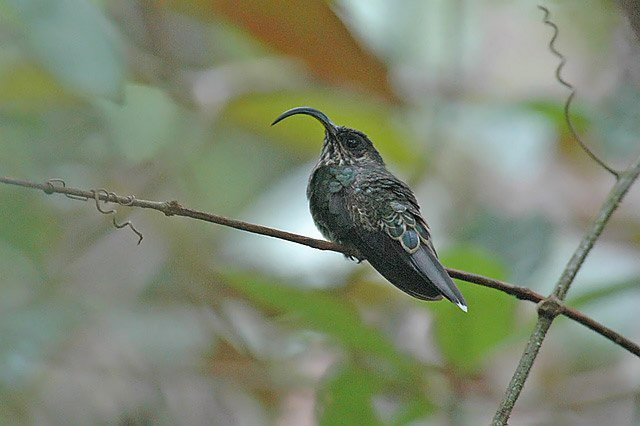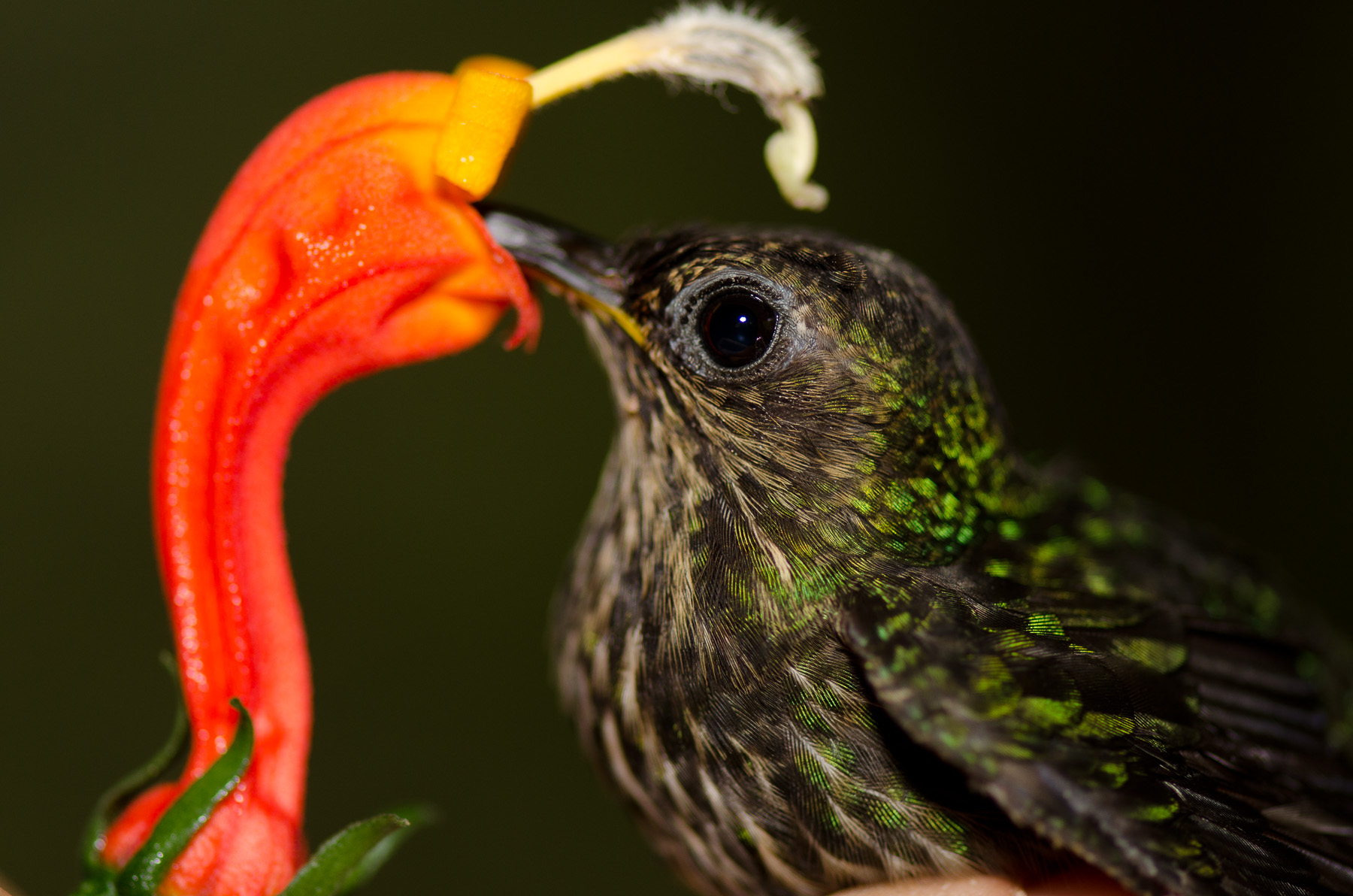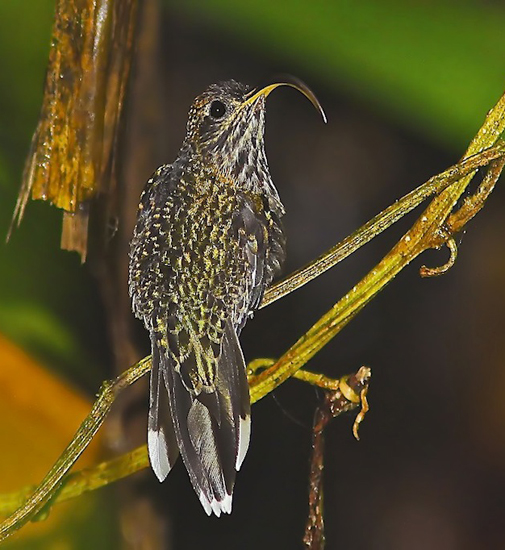
Eutoxeres aquila
SUBFAMILY
Phaethornithinae
TAXONOMY
Trochilus aquila Bourcier, 1847, Bogotб, Colombia. Three subspecies
are recognized.
OTHER COMMON NAMES
English: White/bronze/brown/-tailed sicklebill, common sicklebill;
French: Bec-en-faucille aigle; German: Weisskehl-
Sichelschnabel; Spanish: Picohoz Coliverde.
PHYSICAL CHARACTERISTICS
4.7–5.5 in (12–14 cm); female 0.3–0.35 oz (8–10 g), male
0.35–0.44 oz (10–12.5 g). Unmistakable hummingbird with
strongly decurved bill. Underparts black and white streaked,
upperparts dark green. Rectrices green and brown with contrasting
white tips. Sexes are alike. Immatures resemble adults.
Subspecies are alike.
DISTRIBUTION
E. a. salvini: Costa Rica to west Colombia; E. a. heterura: western
Andes from southwestern Colombia to west Ecuador; E. a.
aquila: east Andes from Colombia to northern Peru.
HABITAT
Understory of tropical rainforest, older second growth, forest
edge near rivers. Often associated with Heliconia patches. Occurs
from sea-level to 2,300 ft (700 m), but has also been observed
at altitudes up to 6,900 ft (2,100 m) in Costa Rica and in
Colombia.
BEHAVIOR
Sicklebills, unlike most other hummingbirds, perch while feeding
on flowers. They establish feeding territories at Heliconia
patches, but may also trapline for nectar along regular routes.
Loud and melodious “wren-like” song. Sedentary.
FEEDING ECOLOGY AND DIET
Feeds mainly on Heliconia and Centropogon flowers with tubular
corollas similar in curved shape to the bird’s bill. Arthropods
are caught in the air by hawking.
REPRODUCTIVE BIOLOGY
Establish leks during the reproductive period. Breeding takes
place from January to June in Central America and from June
to September in South America. Nest is a loosely woven cup of
rootlets and plant fibers attached by cobweb underneath a
long, hanging leaf. Two eggs, incubation 16–17 days by female.
Chick is black with gray dorsal down; fledging 22–25
days.
CONSERVATION STATUS
Common throughout most of its range. Local densities of
three to four pairs per km2.
SIGNIFICANCE TO HUMANS
None known.
Photo Gallery of - White-tipped sicklebill




 Animalia Life
Animalia Life